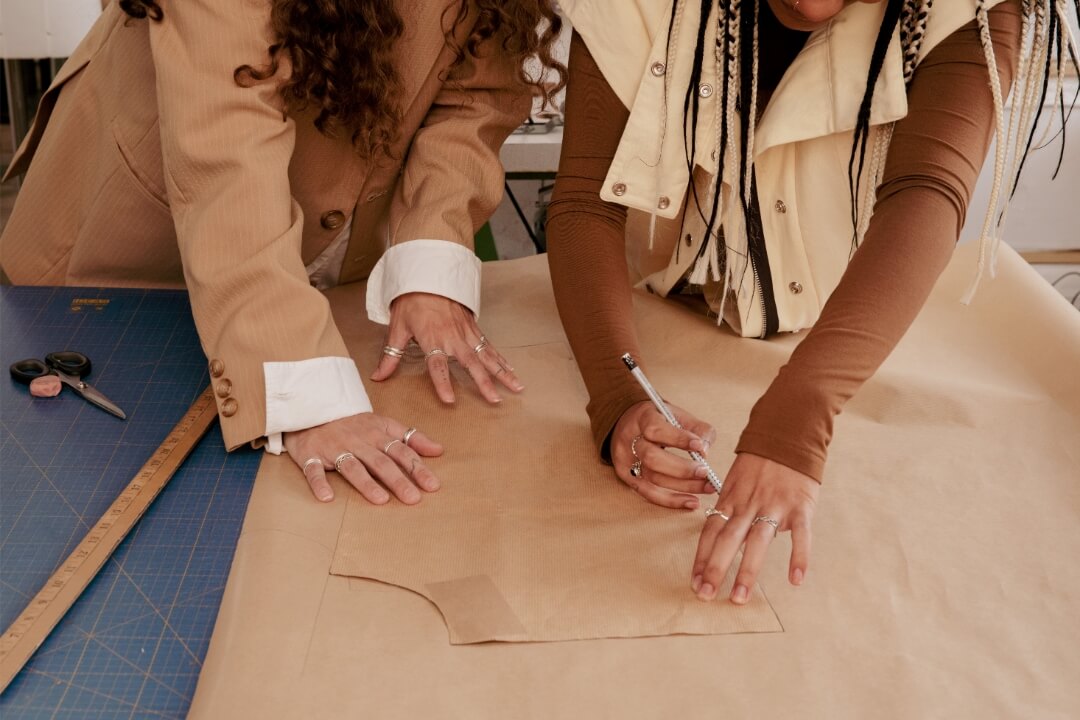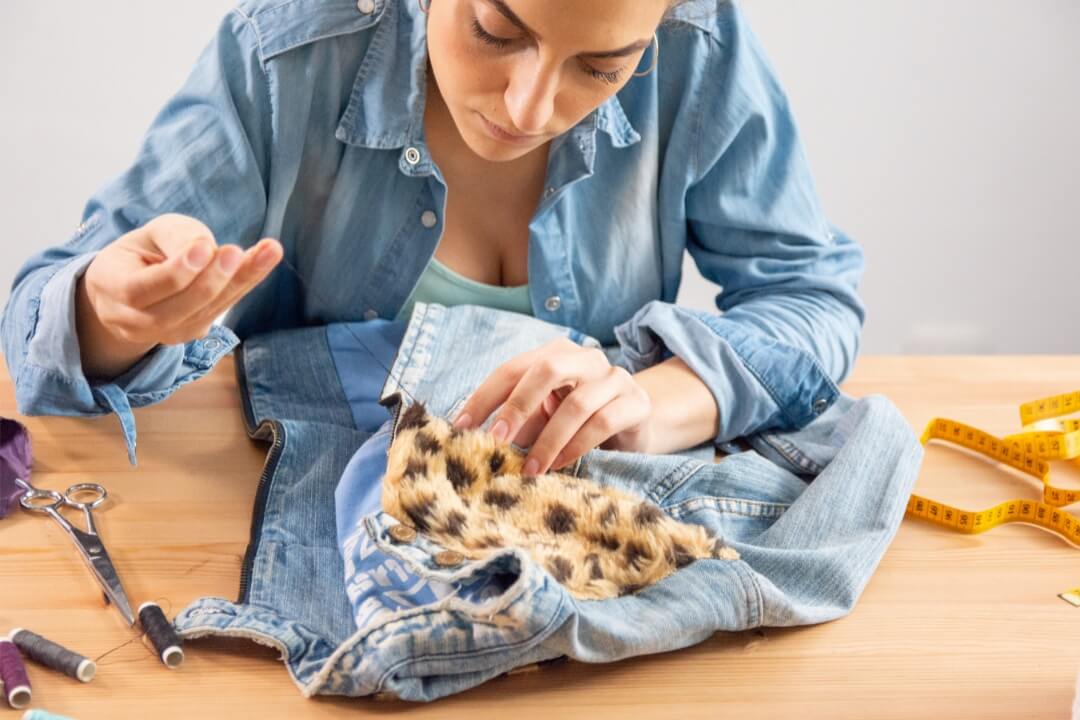
Discover the Hidden Methods and Production Processes behind the manufacturing of your most loved jackets!
Have you ever wondered "how are jackets made" while admiring a sleek leather jacket or a comfy fleece hoodie? Crafting the perfect jacket involves much more than just sewing together pieces of fabric. It's an intricate process that combines design, textile science, and skilled craftsmanship to create a comfortable, stylish, and functional outerwear piece. In this comprehensive and in-depth guide, we will discuss various materials, machines, and techniques used to bring jackets to life and ensure their quality while addressing the burning questions and concerns you might have. So let's get started learning about the fascinating and unique process of how are jackets made in factories.

There are many materials that go into crafting a jacket, each with its own unique properties and benefits. Let's dive into some of the most common textiles used in jacket production and why they may be selected:
Cotton is a natural, breathable fabric known for its softness, making it widely used for lightweight jackets and hoodies.
Fleece is made from synthetic polyester fibers, loved for its warmth and coziness, which make it an ideal choice for winter clothing.
Wool is a natural insulating fiber known for its temperature regulation abilities, frequently used for heavy coats and formal wear such as peacoats.
Leather, obtained from animal hides, is tough, durable, and exudes a sense of luxury and style - this makes it a popular choice for moto jackets, bomber jackets, and fashionable outerwear.
These artificial materials are highly versatile, resistant to wear and tear, and often used as lining material or to create waterproof, windproof, and breathable layers in or on jackets.
Alongside textiles, jackets are infused with specific components to make them functional and fashionable. Here are a few examples of commonly-used hardware:
This universally-known fastening system is essential to the smooth opening and closing of jackets.
Offering a polished and clean look, buttons are frequently used as closures for formal and wearable pieces.
Quick and secure, snap fasteners provide an easy way to fasten a jacket without the hassle of zippers or buttons.
Known for its convenient 'peel and stick' functionality, Velcro offers fast and adjustable closing solutions for jackets, especially sportswear and outdoor gear.
A variety of machines are essential to the production process, helping to streamline and simplify certain tasks. Some of the key machines utilized in jacket production include:
These reliable workhorses create the garments' seams through interlocking threads, ensuring durability and a clean finish.
As the name suggests, these machines are responsible for trimming and binding fabric edges while simultaneously creating a polished, clean seam.
These specialized machines are used to create consistent, precise, and uniform buttonholes that enhance the garment's appearance and functionality.
Utilized in the garment production process, these powerful machines precisely cut through multiple layers of fabric while maintaining accuracy and symmetry in cutting patterns.
Utilized to give a polished finish and remove wrinkles, these machines press and steam jackets, giving them a professional and crisp appearance.

In this initial stage, creative talents and technical skills come together to build the foundation of the final garment:
Designers research and sketch designs, factoring in fashion trends, functionality, and wearer preferences.
Pattern makers transform these artistic concepts into accurate and detailed templates for each component of the jacket.
The patterns are then resized to fit a range of different body shapes and dimensions, ensuring inclusive and comfortable offerings.
Selecting the right materials and components is crucial for a high-quality end product:
The jacket's proposed function, style, and target audience all play a significant role in determining the most suitable textile to use.
Designers choose fasteners and hardware that optimize the jacket's functionality yet maintain its aesthetic appeal.
Companies make active efforts to source materials sustainably and ethically, contributing to social and environmental responsibility.
Before the sewing process can begin, the raw materials must be properly prepared:
Fabric is carefully cut following the generated patterns, ensuring accuracy and minimizing waste.
Smaller elements like buttonholes, pockets, and cuffs are reinforced for added durability and longevity.

At this stage, all the individual components are skillfully pieced together to form the complete jacket:
Skilled seamstresses connect the different pieces using lockstitch or overlock machines, ensuring clean, durable joining.
Sleeves are connected to the body of the jacket, and linings are added to enhance comfort, warmth, and functionality.
Hardware components like zippers, buttons, and snap fasteners are carefully installed into their designated places, enabling easy fastening and adjustability.
Once the jacket is fully assembled, it undergoes final touches to enhance its appearance and aesthetics:
Garments are steamed and pressed to ensure a clean, polished finish and remove any wrinkles.
Any loose threads or excess fabric are carefully cut away, ensuring a neat and tidy appearance.
Personalized embellishments and brand labels are added to give the jacket its distinct identity and flair.

Before a jacket reaches the store shelves, it undergoes a thorough quality check to ensure customer satisfaction:
Each piece is inspected to guarantee uniformity in design, fit, and construction.
Garments are tested on various body types and examined for ease of movement, effective closures, and overall functionality.
Jackets are tested for their ability to withstand wear and tear, retain their shape over time, and fulfill their intended purpose (e.g., waterproof, insulating).

Finally, the jackets are prepared for their journey to retailers and consumers:
Garments receive proper sizing and care labels, price tags, and any other necessary information for the potential buyer.
Jackets are securely packaged in protective materials to prevent damage during shipping and handling.
Packed jackets are sorted and shipped to their respective retailers or directly to customers, completing their journey from concept to creation.
In this comprehensive guide, we have revealed the step-by-step, in-depth process of how are jackets made, from the thoughtful selection of materials and components to the skilled craftsmanship required in sewing, assembly, and quality control. Jacket making is a beautiful symphony of artistry and precision, combining textiles, hardware, and human expertise to craft functional and stylish garments that we wear in our everyday lives. So, the next time you slip on your favorite jacket, take a moment to appreciate the journey it has taken from a designer's vision to its final form.
What is the difference between a bespoke and ready-to-wear jacket?
Bespoke jackets are custom-made for an individual, taking into account their specific measurements, style preferences, and requirements. Ready-to-wear jackets are mass-produced in standard sizes and available to consumers in retail stores.
Does the production process differ for various types of jackets?
While the general production process remains similar, specific materials, techniques, and machinery may differ depending on the type of jacket being made (e.g., denim jackets involve the use of different sewing techniques than leather or technical-fabric jackets).
How can I ensure that the jacket I purchase is ethically and sustainably produced?
Many companies are now taking steps towards ethical and sustainable production practices. To identify such brands, look for certifications or mentions of their commitment to ethical labor and environmental practices on their website or product labeling.
Are custom-made jackets more expensive than ready-to-wear jackets?
Generally, custom-made or bespoke jackets might be more expensive due to the personalized craftsmanship and measurements required to craft a unique piece. With ready-to-wear jackets, the cost of production is spread across multiple units, decreasing the overall price.